Considering a peaceful camping experience away from crowded sites? While the idea is enticing, knowing the right spots, essentials to pack, and rules to observe can be puzzling. That’s where dispersed camping comes into play.
A term not familiar to many, we aim to simplify “what is dispersed camping” to make the concept accessible and easy for everyone, ensuring a relaxed, enjoyable outing under the stars!
Simply put, dispersed camping refers to camping outside of designated campsites, often in more remote or undeveloped areas.
In this complete guide, we take an in-depth look at what this type of camping is and where you can do it. You’ll also learn how to find camping spots, how to camp in national parks and on national forest land, and how to adhere to Leave No Trace guidelines at designated sites.
Do
Don’t
Save for later!!! ⤵️
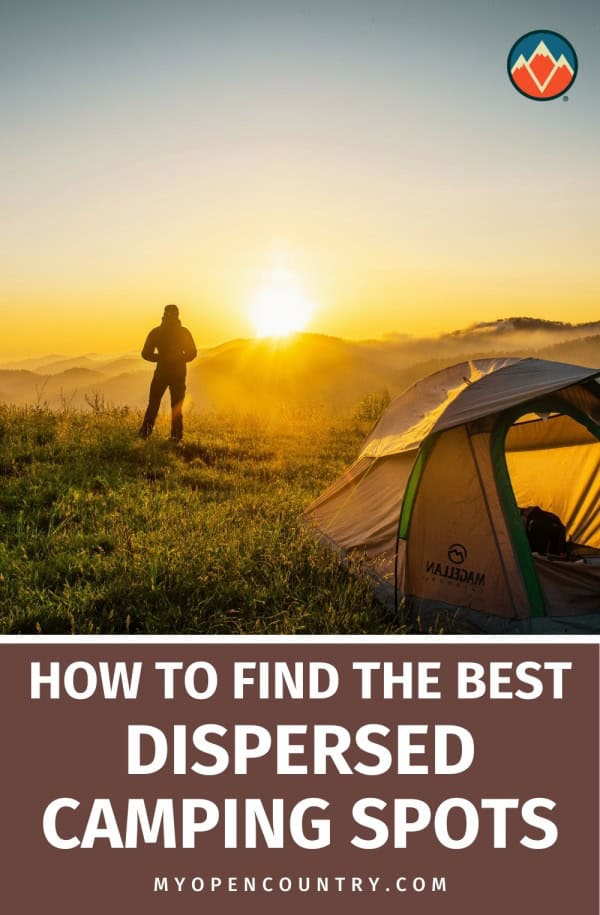
Table of Contents
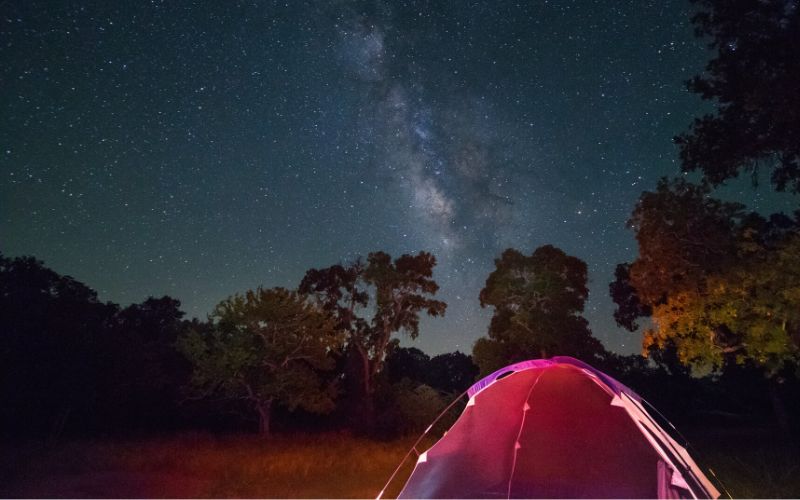
What does dispersed camping mean?
Dispersed camping, also referred to as boondocking or wild camping, involves camping outside designated campgrounds, offering a free and secluded camping experience away from the crowd.
Setting up camp in a dispersed camp means you won’t have amenities like running water, trash removal, or toilets, but you won’t need a reservation or owe a fee. Finding a spot off a back road or deep in the woods offers outdoor enthusiasts a unique opportunity to immerse themselves in the wilderness and connect with nature.
And what about boondocking or “dry” camping? This simply refers to overnighting in your van or RV in an area with no electric or water hookups (no electricity or water).
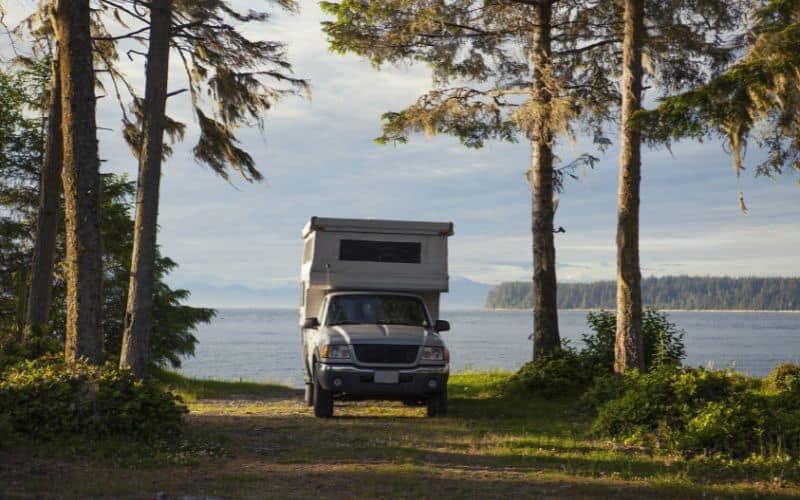
How to find dispersed campsites?
The best place to look for dispersed camping locations is on land managed by the National Forest Service or the Bureau of Land Management (BLM). Together, these two agencies manage over 440 million acres of wilderness areas across the US.
You won’t find designated, maintained sites on these “public lands”, but you can find spots where others have camped before. Look for fire ring or fire pit marks in flat areas.
Call the ranger station near where you want to camp to find information and locations for dispersed camping. You can also check National Forest websites to be sure DCing is allowed where you’re headed.
Forest service roads can lead you to some of the best DC sites available. Cell phone service might not be reliable the further you go. Use a GPS or reliable map to find a quiet pullout and call it a night.
Two other good sources for finding dispersed and dry camp locations are FreeCampsites and Campendium.
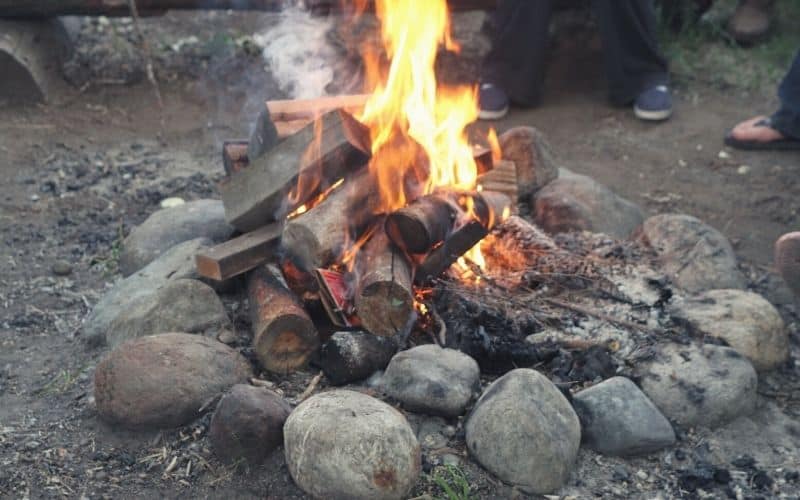
Can I Disperse Camp In National Parks?
While most national parks permit dispersed backcountry camping, it is restricted to designated areas within the park to preserve its natural resources. Before your travel, double-check with park rangers and the National Park Service permit office.
Not every national park offers dispersed camping areas. In these instances, you can likely find a dry camping area nearby. Most national parks are bordered by national forests or BLM land, and DCing is permitted unless otherwise posted.
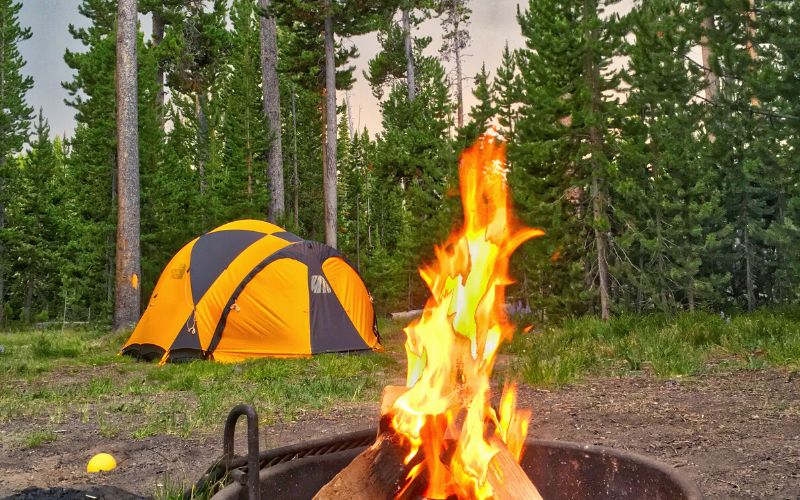
Is Wild Camping Legal?
The legality of wild camping depends on your location, proximity to established recreation areas, and the duration of your stay. One instance where dispersed camping is strictly prohibited is on private land.
In some cases, dispersed camping is not allowed within a mile of trailheads, picnic tables, or other developed recreation areas. Plan ahead to ensure you camp in the right place.
Staying for more than 14 days in one spot is illegal, and if you’re going to set up camp again after 14 days, you have to move at least three miles from the original campsite. And staying in a national forest or national grasslands for more than two 14-day periods is also illegal.
This sounds complicated, but for your average 2-3 day overnighter, just ensure you aren’t on private property or too close to developed areas. If you plan to DC within a national park, you might need to obtain a permit from the park office before you go.
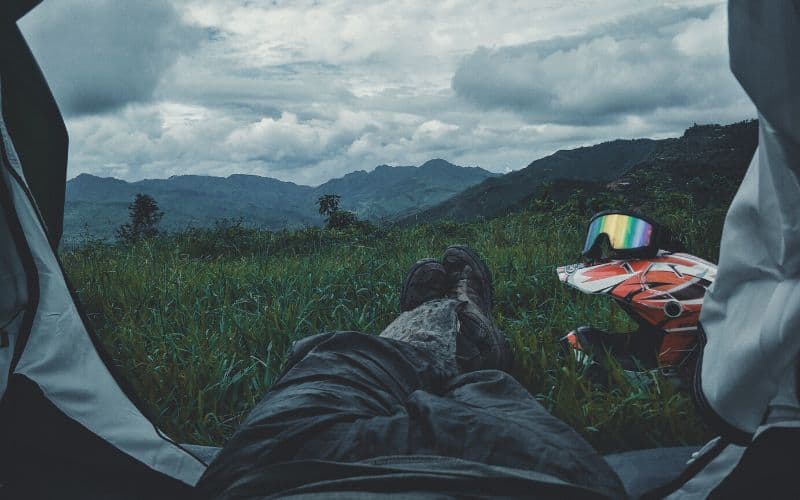
Is it Dangerous to use dispersed campgrounds?
The main dangers of dispersed camping in areas not managed by parks or in established campgrounds are the risk of trees falling and events such as wildfires or flash flooding. To mitigate these dangers, avoid camping under dying or dead trees, camp away from creek beds, arroyos, and streams, practice campfire safety, and regularly check wildfire forecasts.
Wildlife encounters aren’t unique to dispersed camping but are more likely the further out you go. If you are traveling in bear or big cat country, plan accordingly and take the necessary safety precautions, including a bear canister and bear spray. Learn how to be big cat and bear aware in our guides on mountain lion and bear safety.
Be informed of local fire restrictions before starting a campfire, and follow the same fire safety rules you would in a designated, maintained campground. If a fire does get out of control, have an exit strategy.
There is always a certain level of risk associated with camping out into nature, but proper planning goes a long way to help mitigate the dangers you might encounter while dispersed camping.
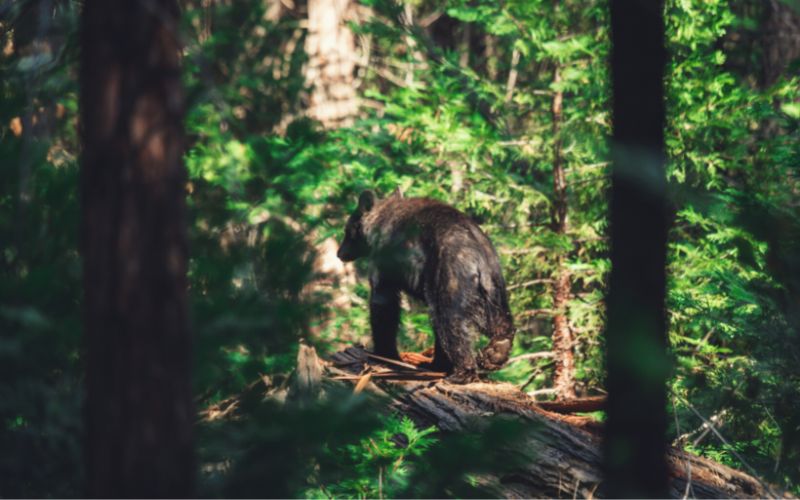
What Are Guidelines For Dispersed Camping?
When engaging in dispersed camping, follow the guidelines listed below to ensure your off-the-beaten-path camping trip minimally impacts the surrounding environment.
- Adhere to Leave No Trace Principles
- Practice Campfire Safety
- Dispose of Human Waste
- Remove Trash
- Stay on Durable Surfaces
- Washing Dishes
- Prepare Ahead
1. Adhere To Leave No Trace Principles
Leave No Trace (LNT) principles were established to minimize human impact in wild places, preserving each area as closely as possible to its original condition before human interaction.
The importance of following Leave No Trace (LNT) principles when using dispersed camping sites cannot be overstated. Nothing is worse than coming across a camp spot and finding it littered with garbage. When visitors to an area repeatedly neglect LNT, land management services are forced to intervene, clean up after everyone, and establish fees and regulations.
All outdoor enthusiasts should know and follow the principles. The following entries on this list cover how some of the most important principles apply to dispersed camping adventures.
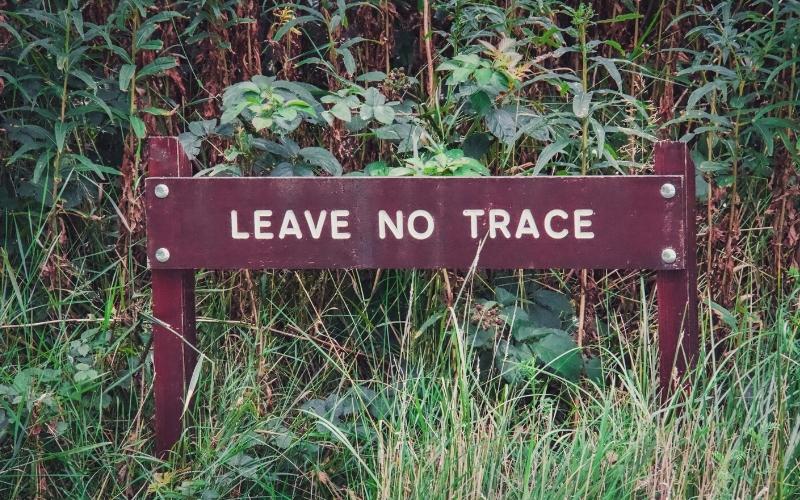
2. Practice Campfire Safety
There are several campfire practices to follow if you need to have a campfire. Among these are using existing fire rings, pits, or a fire pan as well as building as small a fire as possible using approved wood (some areas have restrictions on collecting driftwood or using downed trees).
Most importantly, like Smokey says, “If it’s too hot to touch, it’s too hot to leave.” Put campfires entirely out. Drown your fire or bury it with dirt and sand to make sure the coals are cool to the touch.
Humans start 85% of wildfires. Campfires are dangerous and can quickly get out of control. Consider alternatives like cooking over a camp stove and using enclosed candle lanterns for firelight.
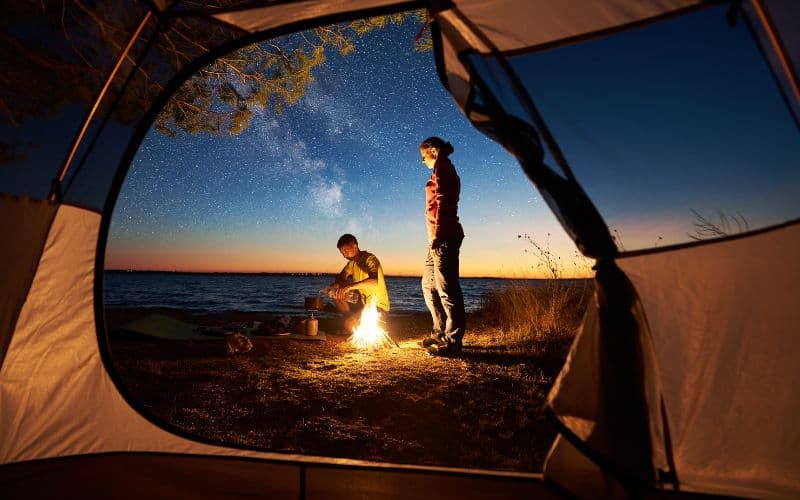
3. Dispose of Human Waste
Disposing of, or removing, solid human waste properly is a must in any dispersed camping area. In most settings, you should dig a cathole at least six to eight inches deep and a minimum of 200 feet from water, campsites, and trails. In all locations, pack out your toilet paper. In high-traffic areas, there may be rules against burying your business so double-check with the local ranger station before heading out.
Human waste can contaminate water and leave the area unsafe for future campers and wildlife. How you deal with feces depends on the location. In arid, desert environments, waste takes longer to decompose than in a forest environment with more moisture. In these regions, you should use wag bags or some sort of portable toilet to altogether remove your waste.

4. Remove Trash
Removing all your trash is essential to prevent attracting animals and causing harm. Besides being a hazard, trash isn’t pleasant to look at and could ruin the primitive camping experience for future visitors. Pack everything out with you, even biodegradable trash like apple cores, and orange or banana peels.
Before you leave a DC site, inspect the area for anything you might have dropped or forgotten to pick up. Even micro scraps of plastics or foods can attract critters. When mice enter an area, snakes might follow, and then your trash will have created a hazard for future campers.

5. Stay On Durable Ground
Whenever possible, stay on the more durable ground created by established trails and campsites over creating new ones. According to LNT principles, “Good campsites are found, not made” encouraging campers not to alter sites by digging, leveling the ground, or removing vegetation.
Be aware of what is underfoot! Stepping off trails or driving off roads can damage precious cryptobiotic soils and fragile tundras and endanger important plant species. When getting to and setting up camp, stay on durable surfaces.
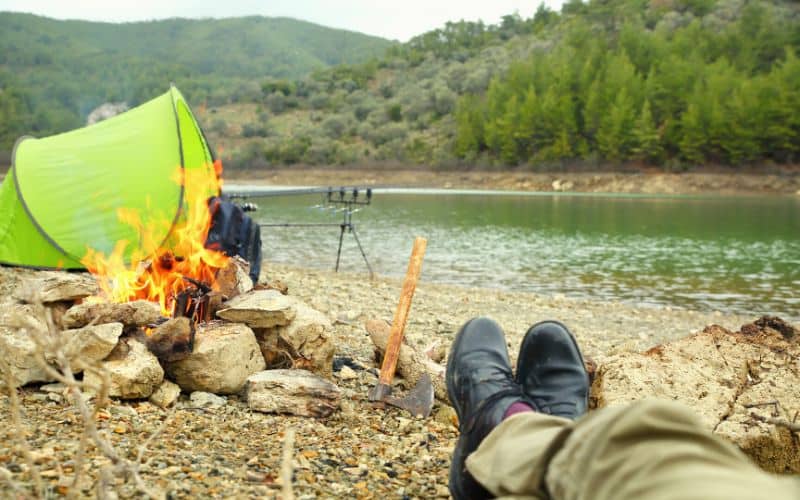
6. Washing Dishes
If taking your dishes home to wash isn’t feasible, create your washing station at least 200 feet from any water source and use biodegradable soap. When you’re done, strain the dishwater to remove food scraps and other debris. While this step might seem tedious, it is crucial to avoid leaving food scraps scattered in the wilderness.
Once you’ve strained the dishwater (and realized you forgot a spoon), scatter the gray water.
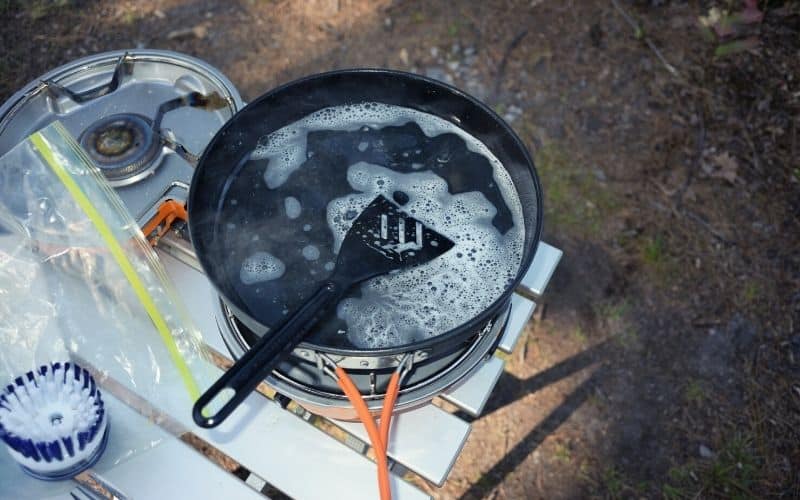
7. Prepare Ahead
There are numerous variables to consider when preparing for dispersed camping, including checking for fire restrictions or burn bans, understanding waste disposal regulations (such as if you can bury waste or need to bring wag bags), and whether or not you need a camping permit for your chosen location. And that’s just the tip of the iceberg.
To succeed outdoors, you should always plan ahead and prepare. You can plan everything from meals to day activities to water resupply locations. The more prepared you are, the better the experience will be for you and for nature.
What is Dispersed Camping? The Verdict
The allure of dispersed camping lies in the adventure of driving along a dirt road and uncovering a secluded, cost-free spot to spend the night. It truly offers a unique opportunity to explore the outdoors and immerse yourself in nature.
Although dispersed camping offers the ultimate freedom in choosing your overnight outdoor adventures, it also comes with great responsibility. Following leave-no-trace principles and respecting your chosen campsite are integral aspects of camping off the beaten path.
We hope our guide to how and where to disperse camp inspires you to get out there and enjoy it the responsible way.
Are you a DCing enthusiast? Let us know in the comments and don’t forget to share this with your friends!
Save for later!!! ⤵️


